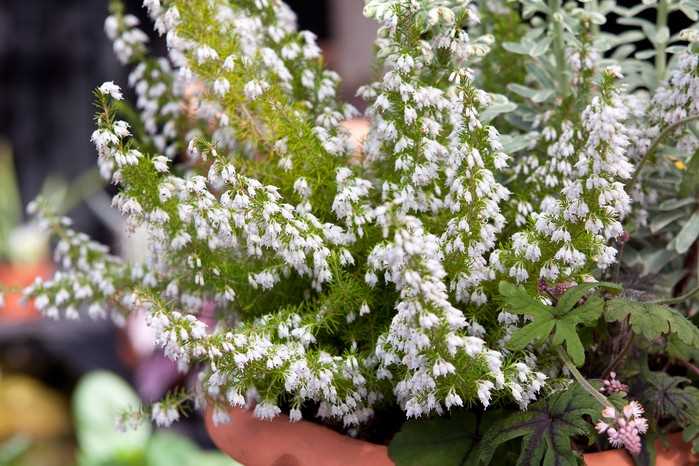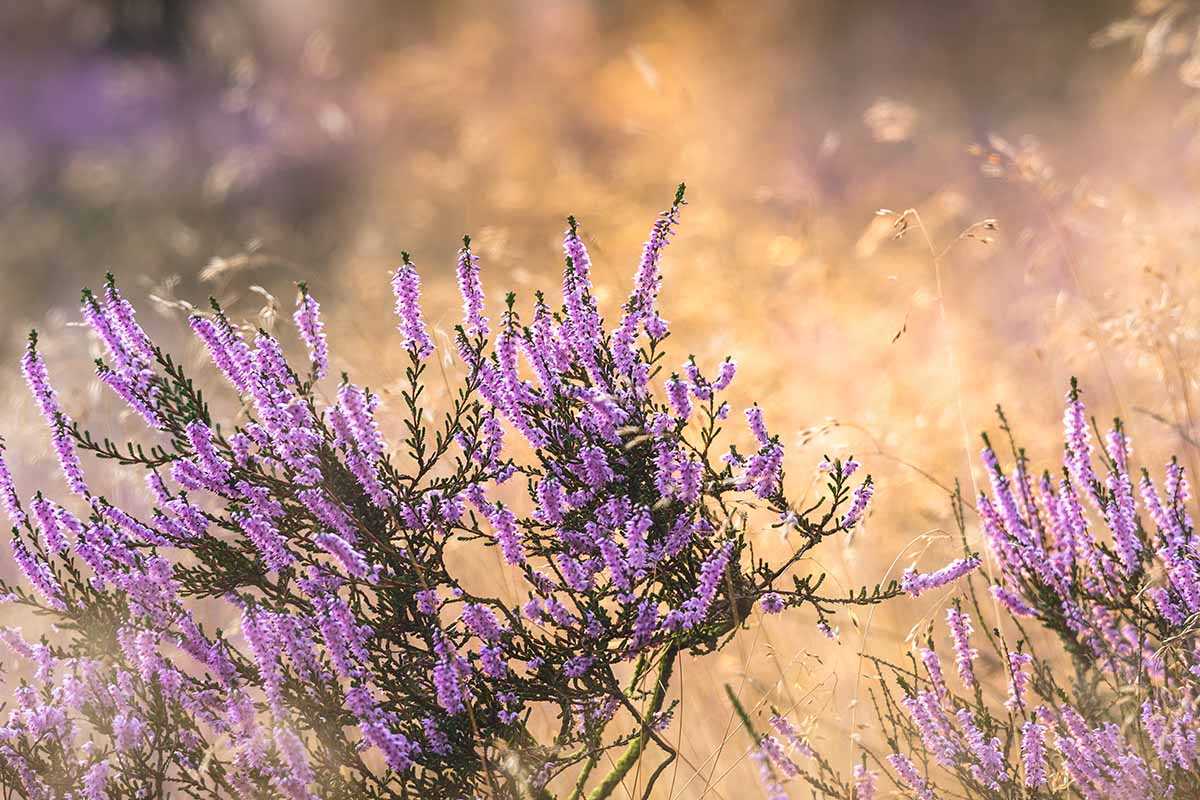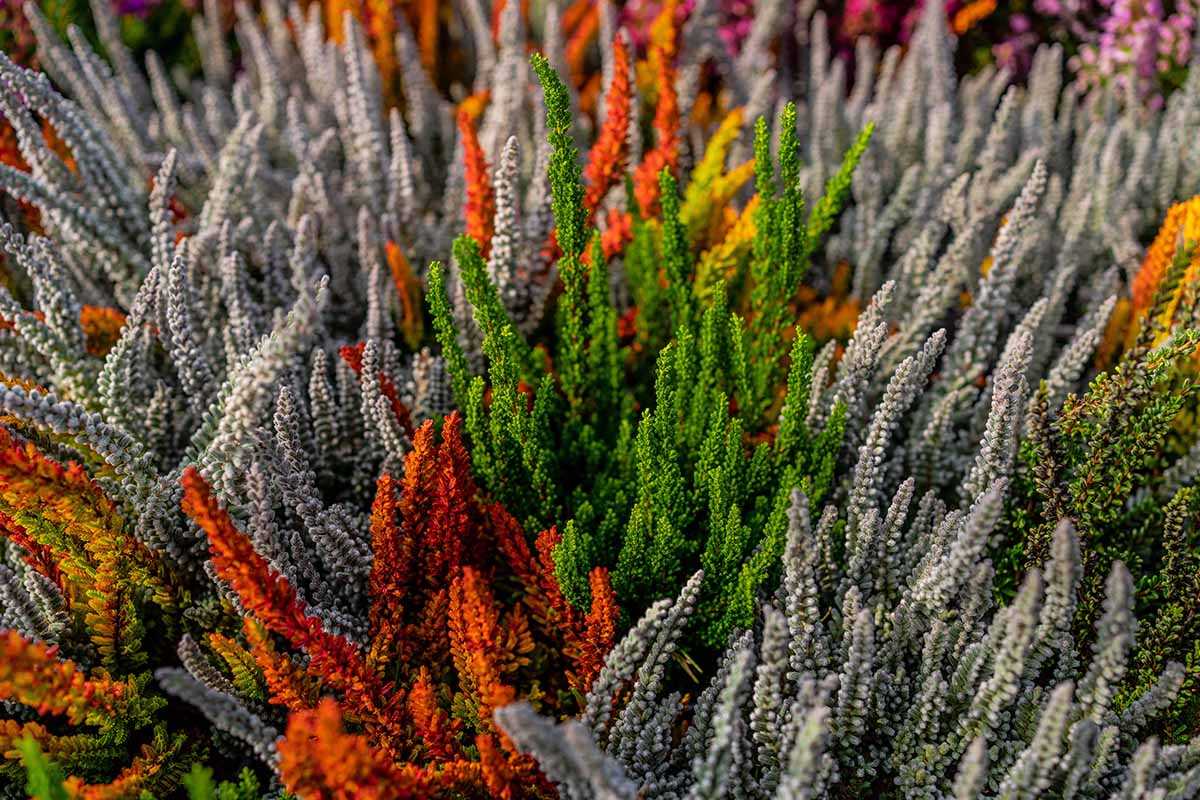- Choosing the Right Variety for Your Garden
- 1. Climate and Hardiness
- 2. Flower Color
- 3. Plant Size
- 4. Growing Season and Bloom Time
- 5. Soil and Sunlight Requirements
- 6. Maintenance and Care
- Planting and Care Instructions
- 1. Site Selection
- 2. Soil Preparation
- 3. Planting
- 4. Watering
- 5. Fertilizing
- 6. Pruning
- 7. Winter Protection
- 8. Pests and Diseases
- Ideal Conditions for Heather Plants
- Tips for Propagating Heather Plants
- Common Pests and Diseases to Watch Out For
- Pests:
- Diseases:
- Pruning and Maintenance Guidelines
- 1. Timing
- 2. Tools
- 3. Deadheading
- 4. Thinning
- 5. Pruning Techniques
- 6. Cleaning
- 7. Fertilizer and Watering
- Frequently Asked Questions about Growing Heather
- 1. What are the conditions for growing heather?
- 2. How often should I water heather plants?
- 3. Can I grow heather in containers?
- 4. How do I propagate heather plants?
- 5. How tall do heather plants grow?
- 6. Do heather plants require pruning?
- 7. Are heather plants deer-resistant?
- 8. Can heather plants withstand cold winters?
- 9. Can I grow heather indoors?
- 10. Are heather plants prone to any diseases or pests?
- Questions and Answers:
- What are the best conditions for growing heather plants?
- When is the best time to plant heather?
- What is the recommended spacing for planting heather?
- How do you propagate heather plants?
- Can heather plants be grown in containers?
- Videos: Why Do Cuttings Fail? Propagation Tips
Heather, also known as Calluna vulgaris, is a beautiful and versatile evergreen shrub that belongs to the Ericaceae family. It is native to Europe and can be found in various colors, including pink, purple, white, and copper. Heather is a popular choice for gardens and landscapes due to its vibrant blooms and low maintenance requirements.
When it comes to planting heather, it is important to choose the right location. Heather prefers acidic soil with good drainage. It thrives in full sun or partial shade and can tolerate cold temperatures. Before planting, make sure to prepare the soil by removing any weeds or grass and adding organic matter to improve drainage.
Propagation of heather can be done through various methods, including seed propagation and stem cuttings. Seeds can be sown indoors in late winter or early spring, while stem cuttings can be taken in summer or early autumn. It is important to use a well-draining propagation mix and provide the right conditions for successful rooting.
Once planted, heather requires minimal care. It is drought tolerant and only needs to be watered during dry periods. Mulching around the base of the plant can help retain moisture and suppress weed growth. Pruning is also recommended to maintain the shape and encourage new growth. Overall, growing heather can be a rewarding experience, as it adds color and texture to any garden or landscape.
Choosing the Right Variety for Your Garden

When it comes to growing heather in your garden, choosing the right variety is important. There are several different types of heather to choose from, each with its own unique characteristics and growing requirements. Here are a few key factors to consider when selecting a variety for your garden:
1. Climate and Hardiness
Heather is a plant that prefers cooler climates and is well adapted to harsh conditions. However, some varieties are more cold hardy than others. Before selecting a variety, consider your local climate and choose one that is suited for your area’s temperature range and weather conditions.
2. Flower Color
Heather comes in a wide range of flower colors, including shades of white, pink, purple, and red. Consider the color scheme of your garden and choose a variety that complements the existing plants and flowers.
3. Plant Size
Heather plants can vary in size, from small compact varieties that reach only a few inches in height to larger varieties that can grow up to several feet tall. Consider the available space in your garden and select a variety that fits well with the overall design.
4. Growing Season and Bloom Time
Heather plants can have different growing seasons and bloom times, with some varieties flowering in spring and others blooming in late summer or early fall. Consider when you want your heather to be in bloom and choose a variety that aligns with your desired timing.
5. Soil and Sunlight Requirements

Heather prefers well-draining soil and full sunlight, but some varieties can tolerate partial shade. Consider the soil and sunlight conditions in your garden and choose a variety that will thrive in those specific conditions.
6. Maintenance and Care
Some varieties of heather require more maintenance and care than others. If you have limited time or gardening experience, choose a variety that is known for being low-maintenance and easy to grow.
By considering these factors and doing some research, you can choose the right variety of heather for your garden. Whether you’re looking for a groundcover, a border plant, or a centerpiece for a rock garden, there’s a heather variety out there that will fit your needs and thrive in your specific garden conditions.
Planting and Care Instructions
1. Site Selection
- Choose a well-drained location with full sun to partial shade for planting heather.
- Avoid areas with heavy clay soil or areas prone to waterlogging.
2. Soil Preparation
- Heather prefers acidic soil with a pH level between 4.5 and 6.0.
- Amend the soil with organic matter, such as compost or peat moss, to improve drainage and soil fertility.
- Remove any weeds or grass from the planting area and loosen the soil with a garden fork or tiller.
3. Planting
- Dig a hole that is slightly larger than the root ball of the heather plant.
- Gently remove the heather plant from its container and place it into the hole.
- Backfill the hole with soil, making sure that the top of the root ball is level with or slightly above the soil surface.
- Press down firmly around the plant to eliminate any air pockets.
- Water the newly planted heather thoroughly to settle the soil.
4. Watering
- Keep the soil evenly moist but not overly saturated.
- Water the heather plants deeply at regular intervals, especially during dry spells.
- Avoid overhead watering, as this can lead to foliar diseases.
5. Fertilizing
- Apply a slow-release fertilizer formulated for acid-loving plants in early spring or late winter.
- Follow the manufacturer’s instructions for application rates.
- Avoid over-fertilizing, as this can lead to excessive vegetative growth.
6. Pruning
- Prune heather plants in early spring, just before new growth begins.
- Remove any dead, damaged, or overcrowded branches.
- Trim the plants lightly to maintain their desired shape and size.
7. Winter Protection
- Apply a layer of mulch around the base of the heather plants to insulate the roots and protect them from freezing temperatures.
- Avoid using heavy mulch, as it can retain moisture and cause root rot.
8. Pests and Diseases
- Monitor the heather plants regularly for pests such as aphids, spider mites, or root rot.
- Inspect the foliage for signs of leaf discoloration, wilting, or unusual growth.
- If pests or diseases are detected, treat them promptly using appropriate organic or chemical controls.
By following these planting and care instructions, you can ensure the healthy growth and beautiful appearance of your heather plants. Remember to provide them with the right growing conditions, water them appropriately, and monitor them for any signs of pests or diseases. With proper care, heather can be a stunning addition to your garden or landscape.
Ideal Conditions for Heather Plants
Heather plants are native to the moors and heaths of Europe and North America. They prefer acidic soils and cool, moist conditions. Here are the ideal conditions for growing heather plants:
- Soil: Heather plants prefer acidic soil with a pH between 4.5 and 6.0. They do not tolerate alkaline soils well. If your soil is alkaline, you can add peat moss or other acidic organic matter to lower the pH.
- Light: Heather plants need full sun to partial shade. They thrive in areas with 4-6 hours of direct sunlight per day. In hotter regions, they may benefit from some afternoon shade to protect them from intense sunlight.
- Temperature: Heather plants tolerate cold temperatures well and can survive winter temperatures as low as -15°F (-26°C). However, they do not tolerate high temperatures well, especially when combined with high humidity.
- Water: Heather plants prefer moist, but well-drained soil. They do not tolerate waterlogged conditions, so make sure the soil is well-drained. Water the plants regularly, especially during dry periods.
- Fertilizer: Heather plants do not require much fertilizer. In fact, excessive fertilization can harm them. If necessary, use a slow-release fertilizer specifically formulated for acid-loving plants. Apply it according to the package instructions.
- Pruning: Heather plants benefit from regular pruning to maintain their shape and encourage bushier growth. Prune them immediately after flowering by cutting back the faded flowers and any straggly or leggy growth.
By providing the ideal conditions for heather plants, you can enjoy their beautiful blooms and evergreen foliage in your garden or landscape.
Tips for Propagating Heather Plants
- Choose a healthy mother plant: When propagating heather plants, it is important to start with a healthy and well-established mother plant. Look for one that has strong growth and vibrant foliage.
- Collect cuttings: Use sharp, clean scissors or a knife to take 2-3 inch long cuttings from the mother plant. Make sure to take the cuttings from non-flowering stems.
- Prepare the cuttings: Remove the lower leaves from the bottom half of the cutting. Dip the cut end into rooting hormone powder to encourage root growth.
- Choose a propagation method: There are two main methods for propagating heather plants: using a rooting medium or using water. Both methods can be successful, so choose the one that works best for you.
- Plant in a rooting medium: If using a rooting medium, fill a container with a mix of equal parts peat moss and perlite. Make small holes in the medium and insert the cuttings. Keep the container in a warm and humid location.
- Propagate in water: If using water, fill a container with clean water and place the cuttings in it. Make sure that at least 1-2 inches of the cutting is submerged in water. Change the water every few days to prevent fungal growth.
- Provide the right conditions: Whether using a rooting medium or water, heather cuttings require a warm and humid environment to root successfully. Keep the cuttings in a bright location, but out of direct sunlight.
- Monitor and care for the cuttings: Check the cuttings regularly for signs of root development. Mist the foliage with water to maintain humidity and check the moisture level of the rooting medium or water. Avoid overwatering, as this can lead to rot.
- Transplanting the rooted cuttings: Once the cuttings have developed a healthy root system, they can be transplanted into individual pots or into the garden. Choose a well-draining soil mix and keep the plants well-watered while they establish themselves.
Common Pests and Diseases to Watch Out For
Growing heather can be a rewarding experience, but like any plant, it is susceptible to pests and diseases. Being aware of common issues can help you take proactive measures to protect your heather plants and keep them healthy. Here are some common pests and diseases to watch out for:
Pests:
- Aphids: These small insects can be a common problem for heather plants. They feed on the sap of the plant, causing stunted growth and distorted leaves. Look out for clusters of these pests on the undersides of leaves.
- Spider mites: These tiny pests are difficult to spot, but their presence can be identified by the fine webbing they create on the foliage. Spider mites feed on the plant’s juices, leading to yellowing leaves and overall weakening of the plant.
- Slugs and snails: These slimy creatures can cause significant damage to heather plants by chewing through leaves and flowers. Look out for silvery slime trails and irregular holes in the foliage. Removing any hiding spots and applying organic slug repellents can help control their population.
- Heather beetles: These beetles are attracted to the flowers of heather plants and can cause damage by chewing through the blooms. Regularly check the flowers for any signs of holes or wilting.
Diseases:
- Root rot: Excessive moisture or poor drainage can lead to root rot in heather plants. This fungal disease can cause the roots to decay and the plant to wilt. Avoid overwatering and ensure proper drainage to prevent this issue.
- Phytophthora: This soil-borne pathogen can cause wilting, yellowing, and stunted growth in heather plants. It thrives in wet conditions and can be difficult to control. Maintaining good air circulation and applying fungicides may help manage this disease.
- Gray mold: Also known as botrytis blight, gray mold can affect heather plants during periods of high humidity. It causes a fuzzy gray mold to appear on the leaves, flowers, and stems. Prune affected parts and ensure proper air circulation to minimize its spread.
- Anthracnose: This fungal disease causes dark, sunken lesions to appear on the stems and foliage of heather plants. It can lead to leaf drop and overall decline of the plant. Prune affected areas and apply fungicides to manage this disease.
Regularly inspecting your heather plants for any signs of pests or diseases can help catch and address issues early on. By providing proper care, maintaining good plant hygiene, and taking appropriate measures, you can keep your heather plants healthy and flourishing.
Pruning and Maintenance Guidelines
Proper pruning and maintenance practices are essential for keeping your heather plants healthy and promoting vigorous growth. Here are some guidelines to follow:
1. Timing
- Prune heather plants in early spring before new growth begins.
- Avoid pruning during winter or late fall, as it can stimulate new growth that may be damaged by frost.
2. Tools
- Use clean, sharp pruning shears or secateurs to make clean cuts and minimize the risk of disease transmission.
- Sterilize your pruning tools between cuts if you suspect any diseases or pests present on the plants.
3. Deadheading

- Regularly deadhead faded flowers by cutting off the spent blooms just below the flower head.
- This promotes further blooming and keeps the plant looking neat and tidy.
4. Thinning
- Every few years, thin out overgrown heather plants by removing some of the older, woody stems.
- This encourages new growth and helps maintain a compact and attractive shape.
5. Pruning Techniques
- For pruning compact heather varieties, cut back the plant by about one-third of its overall height.
- For larger, sprawling varieties, prune back more heavily to maintain a more manageable size.
- Avoid cutting into the woody stem of the plant, as this can cause damage and hinder new growth.
6. Cleaning
- Remove any fallen leaves, debris, or dead plant material from around the base of the heather plants.
- Cleaning the area helps improve air circulation, prevents the spread of diseases, and reduces pest problems.
7. Fertilizer and Watering
- Fertilize heather plants once a year in early spring with a balanced slow-release fertilizer.
- Water the plants regularly, especially during dry spells, but avoid overwatering to prevent root rot.
By following these pruning and maintenance guidelines, you can enjoy healthy and beautiful heather plants that will thrive for years to come.
Frequently Asked Questions about Growing Heather
1. What are the conditions for growing heather?

Heather plants thrive in well-draining, acidic soil with a pH level of 4.5 to 5.5. They prefer full sun exposure, although some varieties can tolerate partial shade. Heather plants also require good air circulation, so avoid planting them in locations with poor air movement.
2. How often should I water heather plants?
Heather plants have shallow root systems, so they require regular watering. Water the plants thoroughly when the top inch of soil feels dry to the touch. During the growing season, water heather plants every 7 to 10 days. In the winter months, reduce watering frequency but make sure the soil doesn’t completely dry out.
3. Can I grow heather in containers?
Yes, heather plants can be grown in containers. Use a well-draining potting mix specifically formulated for acid-loving plants. Make sure the container has drainage holes to prevent waterlogging. Place the container in a location that receives at least 6 to 8 hours of sunlight per day.
4. How do I propagate heather plants?
Heather plants can be propagated through several methods including seed sowing, division, and stem cuttings. Seeds should be sown in late winter or early spring, while division can be done in early spring or early fall. Stem cuttings can be taken in late summer or early fall.
5. How tall do heather plants grow?
The height of heather plants varies depending on the variety, but most heather plants grow between 6 and 24 inches tall. Some varieties, such as Calluna vulgaris, can grow up to 36 inches in height.
6. Do heather plants require pruning?
Heather plants generally require minimal pruning. Lightly trim them after flowering to maintain their shape and promote new growth. Trim back any dead or damaged branches to improve the overall appearance of the plant. Avoid cutting into woody stems as they may not regenerate.
7. Are heather plants deer-resistant?
Heather plants are generally deer-resistant due to their strong fragrance and tough foliage. However, in times of scarcity, deer may still feed on heather plants. Consider using deer repellents or installing fencing to protect your heather plants from deer damage.
8. Can heather plants withstand cold winters?
Many heather varieties are hardy and can withstand cold winters. However, it’s essential to select heather varieties that are suitable for your specific climate. If you live in an area with extremely cold winters, consider protecting your heather plants with mulch or burlap during the winter months.
9. Can I grow heather indoors?
While heather plants are primarily outdoor plants, some dwarf varieties can be grown indoors as houseplants. Choose compact varieties that can handle indoor conditions like lower light levels and drier air. Place the indoor heather plants near a bright window and provide them with well-draining soil.
10. Are heather plants prone to any diseases or pests?

Heather plants are generally resistant to many diseases and pests. However, they can be susceptible to root rot if the soil is too wet or poorly drained. Keep an eye out for aphids, spider mites, and heather beetles. Regularly inspect your plants for any signs of damage or infestation and take appropriate action if necessary.
Questions and Answers:
What are the best conditions for growing heather plants?
Heather plants prefer acidic soil with good drainage and full sun to partial shade. They can tolerate some wind, but excessive exposure can cause damage. They also prefer cooler temperatures, ideally below 60°F during the day and around 50°F at night.
When is the best time to plant heather?
The best time to plant heather is in the early spring or early fall. This allows the plants to establish their root systems before the extreme temperatures of summer or winter. It is important to avoid planting during periods of frost or when the ground is waterlogged.
What is the recommended spacing for planting heather?
The recommended spacing for planting heather depends on the specific variety, but generally, they should be spaced about 12 to 24 inches apart. This allows enough room for the plants to grow and spread without crowding each other.
How do you propagate heather plants?
Heather plants can be propagated through various methods, including stem cuttings and layering. To propagate through stem cuttings, select healthy shoots and cut them just below a leaf node. Remove the lower leaves and dip the cut end in a rooting hormone. Plant the cuttings in well-draining soil and keep them moist until they establish roots. Layering involves bending a low-growing shoot and burying a section of it in the soil, where it will form roots. Once rooted, the new plant can be separated from the parent plant.
Can heather plants be grown in containers?
Yes, heather plants can be grown in containers. Choose a container with good drainage and use a well-draining potting mix. Place the container in a location that receives full sun to partial shade. Water the plants regularly, keeping the soil evenly moist but not waterlogged. Be sure to provide proper insulation and protection from extreme temperatures in colder climates.







